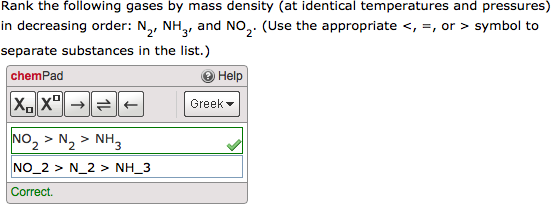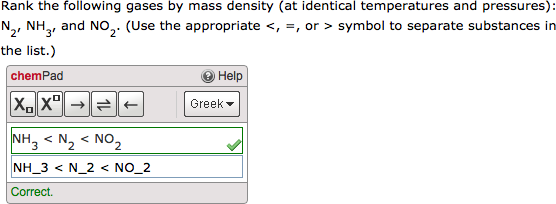When you create chemPad questions that are answered with a list of items, you can choose whether order is important or not.
Unordered lists are delimited by commas and order is not important, so the
following responses are equivalent:
- Li, Na, K
- K, Na, Li
Rank-order lists are delimited by three symbols: >, <, and =.
These symbols are used to indicate items' relative ranking, so the following responses
are
not equivalent:
- H < He < Li
- Li < H < He
Either-order lists, like rank-order lists, are delimited by three
symbols: >, <, and =. These symbols are used to indicate items' relative ranking,
but your
students can specify their response either in ascending or descending order, so the
following
responses are equivalent:
- H < He < Li
- Li > He > H
Note Do not specify answer keys containing the < or > characters directly in
Answer, as these characters might be interpreted as the start or end of
a tag. Instead, assign your answer key to a variable and reference the variable as
described in
this topic.
Example chemPad Question (Unordered List)
The following table summarizes an actual question.
|
QID |
|
|---|---|
|
Name |
|
|
Mode |
|
|
Question |
|
|
Answer |
|
|
Display to Students |

|
Example chemPad Question (Rank-Order List)
The following table summarizes an actual question.
|
QID |
|
|---|---|
|
Name |
|
|
Mode |
|
|
Question |
|
|
Answer |
|
|
Display to Students |

|
Example chemPad Question (Either-Order List)
The following table summarizes an actual question.
|
QID |
|
|---|---|
|
Name |
|
|
Mode |
|
|
Question |
|
|
Answer |
|
|
Display to Students |

|